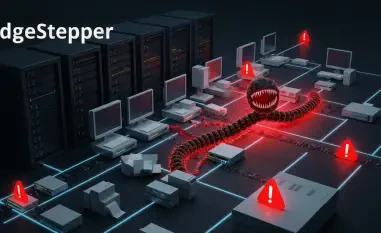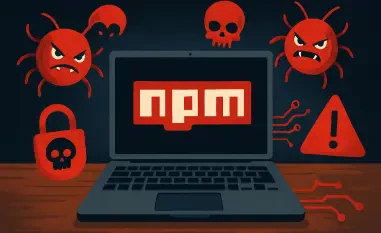In the ever-shifting realm of cybersecurity, a new and formidable threat has emerged with the rise of TA585, a cybercrime group distinguished by its remarkable autonomy and sophisticated tactics, as identified by the Proofpoint Threat Research Team. This shadowy actor operates without reliance on external services, controlling every facet of its attack chain from infrastructure to malware deployment. Central to their arsenal is MonsterV2, a versatile off-the-shelf malware that serves as a remote access trojan (RAT), data stealer, and payload loader. The combination of TA585’s independent operations and MonsterV2’s potent capabilities presents a significant challenge to individuals and organizations alike. This article explores the intricate methods employed by TA585 to execute advanced cyberattacks, delving into their phishing strategies, the malware’s devastating features, and the broader implications for digital security in an era of evolving cyber threats.
Decoding TA585’s Operational Strategies
Autonomy in Cybercrime Execution
TA585’s ability to function independently marks a notable shift in the cybercrime landscape, where many actors typically depend on third-party services or initial access brokers to facilitate their attacks. By managing its own infrastructure, crafting bespoke phishing lures, and overseeing malware delivery, TA585 reduces vulnerabilities that come with external dependencies. This self-reliance not only enhances their adaptability but also makes tracking and disruption by law enforcement more difficult. Their transition to using MonsterV2 in early campaigns this year reflects a strategic evolution, likely driven by the need for more effective tools or shifts in underground market availability. Such independence suggests a trend where threat actors may increasingly adopt full control over their operations, posing unique challenges for cybersecurity defenses that must counter highly customized and elusive attack chains.
Mastery of Deceptive Phishing Techniques
Phishing remains a cornerstone of TA585’s approach, leveraging human psychology over technical exploits to initiate infections. Their campaigns often feature carefully themed lures, such as IRS notifications delivered via email or fake GitHub security alerts, designed to exploit trust in familiar entities. Victims are directed to malicious webpages or encounter deceptive prompts like fake CAPTCHA overlays on compromised legitimate sites, ultimately leading to the execution of harmful PowerShell commands. This focus on social engineering underscores a critical vulnerability in user behavior, as TA585 bypasses traditional security measures by convincing individuals to unwittingly install MonsterV2. As these tactics grow more refined, the need for robust user awareness programs becomes paramount to mitigate the risk of falling prey to such manipulative schemes.
Exploring MonsterV2’s Lethal Arsenal
Multifaceted Threats and System Impacts
MonsterV2 stands out as a particularly dangerous tool in TA585’s repertoire due to its wide array of destructive capabilities tailored for maximum impact. Functioning as a stealer, it captures sensitive data through keylogging and screenshot functionalities, while its clipboard hijacking feature targets cryptocurrency transactions for theft. Beyond data extraction, MonsterV2 enables remote control through Hidden Virtual Network Computing (HVNC), allowing attackers to manipulate infected systems directly. It can also deploy secondary payloads like StealC or Remcos RAT, amplifying the scope of damage. Configurable settings, including persistence mechanisms signaled by parameters like the misspelled “aurotun,” ensure the malware remains embedded, while communication with command-and-control (C2) servers facilitates ongoing instructions for actions ranging from data theft to system shutdowns, making it a persistent and evolving threat.
Sophisticated Evasion and Distribution Networks
The design of MonsterV2 incorporates advanced evasion tactics that significantly complicate detection and analysis by security tools. Anti-analysis checks prevent debugging and sandbox environments from uncovering its operations, while a C++ crypter known as SonicCrypt further obfuscates its presence. TA585 distributes this malware through diverse channels, such as PDFs with embedded malicious links or actor-controlled domains like intlspring[.]com, often integrated into broader phishing campaigns. Infrastructure overlaps with other malware, such as Rhadamanthys Stealer, hint at a networked cybercrime ecosystem where resources may be shared, even as TA585 maintains operational independence. These evasion and distribution strategies highlight the malware’s adaptability, ensuring it reaches a wide range of targets while minimizing the likelihood of interception by conventional security measures.
Implications for Future Defense Strategies
Looking ahead, the activities of TA585 and the deployment of MonsterV2 reveal critical gaps in current cybersecurity approaches that demand urgent attention. The reliance on social engineering underscores the necessity for comprehensive user training to recognize and resist manipulative tactics like fake notifications or deceptive prompts. Meanwhile, the sophisticated evasion techniques of MonsterV2 necessitate the adoption of advanced endpoint detection and response (EDR) solutions capable of identifying subtle indicators of compromise. The commoditization of such malware on underground forums also calls for vigilant monitoring of criminal marketplaces to anticipate and preempt emerging threats. Ultimately, international cooperation among law enforcement and cybersecurity entities becomes essential to address geographically targeted campaigns and disrupt the operations of autonomous threat actors like TA585, ensuring a more resilient digital environment for all.













